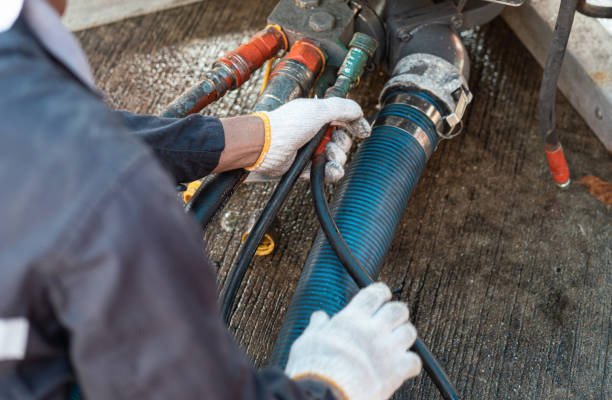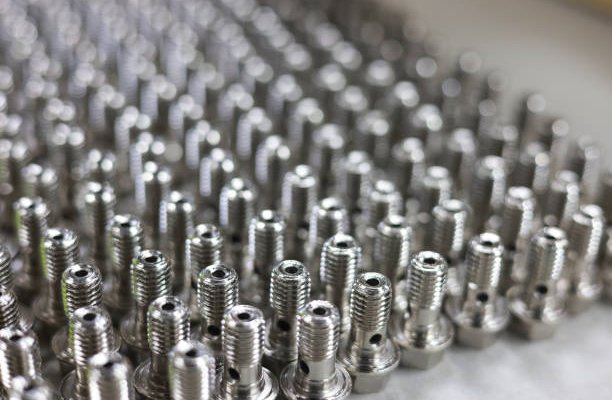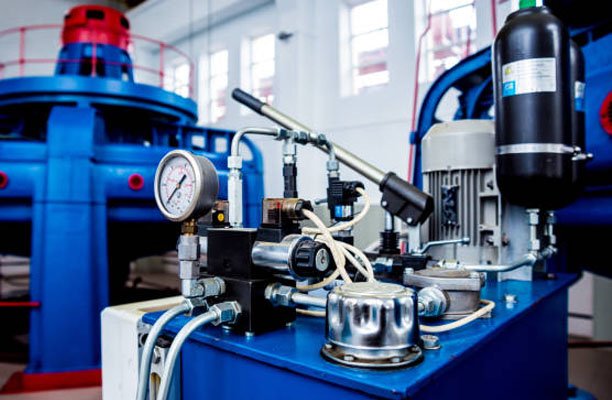Hydraulic systems are essential for countless industries, serving as the powerhouse behind heavy machinery and equipment. However, one small issue can disrupt everything—loose hydraulic hose fittings. They might seem insignificant at first, but ignoring them can lead to system inefficiency, safety hazards, and costly repairs.
In this detailed guide, we’ll explore every nook and cranny of loose hydraulic hose fittings: what they are, why they loosen, how to fix them, and how to prevent future issues. Stick around, and you’ll leave with actionable insights to save time, money, and hassle.
What Are Hydraulic Hose Fittings?
At their core, hydraulic hose fittings are the connectors that attach hydraulic hoses to various components like pumps, valves, or actuators. They form a vital link in hydraulic systems, ensuring the safe and efficient transfer of pressurized fluid from one component to another. Without these fittings, a hydraulic system simply can’t function.
Types of Hydraulic Hose Fittings
Hydraulic fittings come in various types to suit different applications:
- Crimped Fittings: These are permanently attached to the hose using a crimping tool, ensuring a tight, leak-proof seal.
- Threaded Fittings: These use threads to secure the connection. They are common in systems requiring easy assembly and disassembly.
- Quick-Connect Fittings: Designed for quick installation or replacement, these are ideal for systems that require frequent maintenance or hose changes.
Each type of fitting is designed to withstand the high-pressure environments of hydraulic systems, but when they fail or loosen, the consequences can be significant.
What Causes Hydraulic Hose Fittings to Loosen?
Understanding the root causes of loose hydraulic hose fittings can help you tackle the issue effectively. Here’s a more in-depth look at the main culprits:
1. Vibration and Movement
Hydraulic systems are often part of heavy machinery that generates constant vibration and movement. Over time, these vibrations can shake the fittings loose, especially if they weren’t tightened properly during installation.
For example, construction equipment like excavators and bulldozers often operate in rough conditions, making them particularly susceptible to vibration-induced loosening.
2. Incorrect Installation
When fittings aren’t installed according to the manufacturer’s specifications—whether it’s the torque level, alignment, or sealing method—they are more likely to loosen. Improper tightening is one of the most common mistakes made during installation.
3. Temperature Fluctuations
Hydraulic systems often operate in environments with extreme temperature changes. The constant expansion and contraction of fittings and hoses due to heat and cold can weaken the connection over time. This is especially common in outdoor machinery like agricultural equipment.
4. Wear and Tear
Like any mechanical component, hydraulic fittings experience wear and tear over time. Threads can become stripped, seals can deteriorate, and friction can erode the material, all of which contribute to a looser fit.
5. Low-Quality Fittings
If you’re using cheap or substandard fittings, don’t be surprised when they fail. Low-quality materials and poor manufacturing processes can lead to fittings that can’t handle the pressure or environmental conditions of your system.
By addressing these root causes early, you can avoid the costly downtime and damage associated with loose fittings.
Warning Signs of Loose Hydraulic Hose Fittings
Loose fittings often give subtle hints before they become a major problem. Knowing these signs can save you from unexpected breakdowns:

1. Leaking Fluid
Leaking hydraulic fluid is the most obvious indicator of a loose fitting. You might notice puddles near the machinery, damp spots around the fitting, or reduced fluid levels in the system.
2. Loss of Pressure
Loose fittings can allow pressurized fluid to escape, reducing the system’s performance. You might notice slower operation, weaker force, or erratic system behavior.
3. Visible Damage
Inspect your fittings for cracks, stripped threads, or worn-out seals. These issues can weaken the connection and lead to loosening.
4. Noisy Operation
Air entering the hydraulic system through a loose fitting can cause unusual noises like squealing or rattling. If your machine suddenly starts making sounds it shouldn’t, check the fittings.
5. Overheating
Loose fittings can cause hydraulic systems to overheat by disrupting fluid flow, which puts extra strain on the components.
Being proactive and addressing these warning signs early can prevent further damage and costly repairs.
How to Fix Loose Hydraulic Hose Fittings
Fixing a loose hydraulic hose fitting isn’t just about tightening a few bolts; it requires a methodical approach to ensure the problem is solved properly. Let’s break it down step-by-step:
1. Turn Off the System
Before doing anything, make sure the hydraulic system is completely shut down. Release any residual pressure to prevent accidents or injuries. Never attempt to fix a hydraulic fitting while the system is active—it’s not worth the risk!
2. Inspect the Fitting and Hose
Carefully examine the fitting for signs of damage. Look for cracks, stripped threads, or deformities. Don’t forget to check the hose near the fitting as well—fraying or wear here can also cause problems.
3. Tighten the Fitting
Using a wrench, tighten the fitting according to the manufacturer’s recommended torque specifications. Too loose, and the fitting will leak again. Too tight, and you could strip the threads or damage the seal.
4. Replace Damaged Components
If the fitting or hose is beyond repair, replace it with a high-quality part. Always double-check that the replacement matches the system’s pressure, temperature, and size requirements.
5. Test the System
Once you’ve secured or replaced the fitting, power up the system and observe its operation. Check for leaks, pressure drops, or unusual noises. If everything is functioning as expected, you’re good to go!
Preventive Maintenance for Hydraulic Hose Fittings
Prevention is always better than cure, and with a little effort, you can keep your hydraulic hose fittings secure and reliable. Here’s how:
1. Inspect Regularly
Set up a routine inspection schedule to identify loose fittings, leaks, or worn-out components before they become serious problems. Monthly inspections are ideal for most systems, but high-usage equipment may require more frequent checks.
2. Use the Right Tools
Always use the appropriate tools and torque settings when installing or tightening fittings. A torque wrench is a must-have to ensure you don’t overtighten or under-tighten.
3. Invest in High-Quality Components
Don’t cut corners when it comes to fittings and hoses. High-quality components may cost more upfront, but they’ll save you time, money, and headaches in the long run.
4. Monitor Pressure and Temperature
Use gauges to keep an eye on system pressure and temperature. Excessive pressure or overheating can damage hoses and fittings, leading to loosening or failure.
5. Educate Your Team
Ensure that everyone who operates or maintains the hydraulic system knows how to identify and fix loose fittings. A well-trained team is your best defense against preventable issues.
Conclusion
Loose hydraulic hose fittings are more than just an inconvenience—they’re a risk to your system’s efficiency, safety, and reliability. By understanding the causes, warning signs, and solutions for loose fittings, you can keep your hydraulic systems running smoothly and prevent costly downtime.
FAQs
Q: Can I use thread sealant or tape to stop fittings from loosening?
A: Thread sealants or tapes can be useful for threaded fittings but aren’t a universal solution. Always follow the manufacturer’s recommendations and use sealants only where appropriate.
Q: How often should I inspect hydraulic hose fittings?
A: For most systems, a monthly inspection is sufficient. However, if your machinery operates in extreme conditions or is used heavily, consider inspecting weekly.
Q: What’s the best way to prevent vibration-induced loosening?
A: Installing vibration dampers or supports can help reduce the impact of movement on your fittings, keeping them secure.
Q: What happens if I overtighten a hydraulic hose fitting?
A: Overtightening a fitting can cause serious issues, such as damaging the threads or crushing the seal, which can lead to leaks or even complete system failure. Always follow the manufacturer’s recommended torque specifications to avoid this problem.
Q: How do I know if a fitting is compatible with my hydraulic system?
A: Compatibility is determined by factors like thread type (e.g., BSP, NPT, or JIC), pressure rating, temperature tolerance, and size. Always check your system’s manual or consult with the manufacturer to ensure you’re using the correct fittings for your specific setup.
Q: Can I reuse hydraulic fittings after they’ve been removed?
A: Reusing fittings is not generally recommended, especially if they show signs of wear or damage. Repeated installation and removal can weaken threads, seals, or crimped connections, increasing the likelihood of leaks or failure. For critical systems, always use new fittings to ensure reliability.





